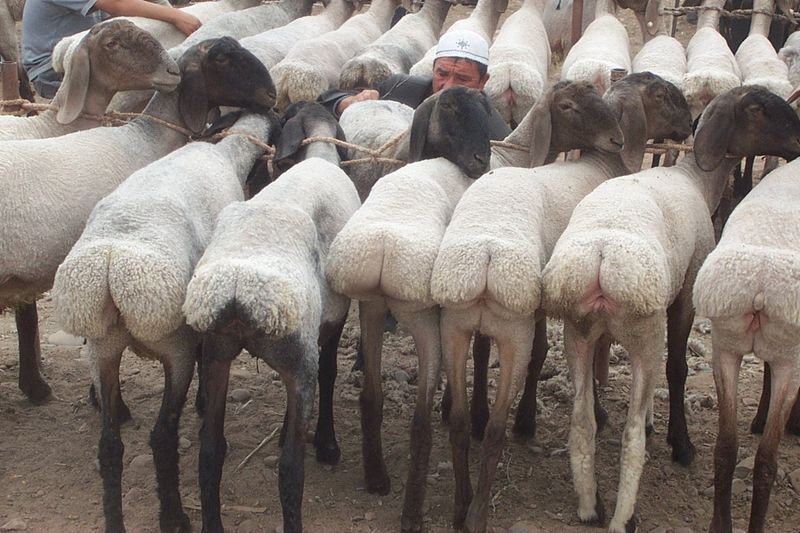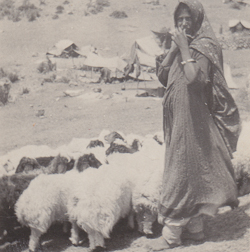On Fat-Tailed Sheep

It’s no secret that our appetites shape the animals around us. Compare the snout of a wild boar, long and slender for the quest for food, its tusks and its lean, well-muscled frame with the porkers bred for fat, their snouts a mere stub, their tusks long ago bred out of them…
But one of the weirdest examples of an animal bred for food is the fat-tailed sheep, still found across the South Asian steppes, and a standout in Mongolia.
Two and a half millennia ago, Herodotus was gobsmacked by these creatures, and their huge fat tails – some, he claimed, so large that “every shepherd knows enough woodwork to make little carts on to which they fasten the sheeps’ tails, one for the tail of every animal.”
Which would have been oh-so-credible had it not followed a learned diquistion on the winged snakes that guard the spices of Arabia.
Today the focus seems to have moved onto, well, the butt…
How did they come about?
Well… and this is a bit gory… Nomadic herdsmen, without farming facilities – or, pretty much anything else you could think of – needed both fat and meat in their diet.
 The meat would be typically cured under their saddles, the pounding and horse-sweat breaking down its fibres – almost in the manner of ceviche.
The meat would be typically cured under their saddles, the pounding and horse-sweat breaking down its fibres – almost in the manner of ceviche.
But the fat? That was harder to get. So they bred sheep that produced huge quantities of fat in their tails and hind-quarters – the famous fat-tailed sheep.
And then, should they need fat while pounding the plains, whether for lighting or just plain old calories, they’d just take a slice off the tail.
Yes, I know. Icky.